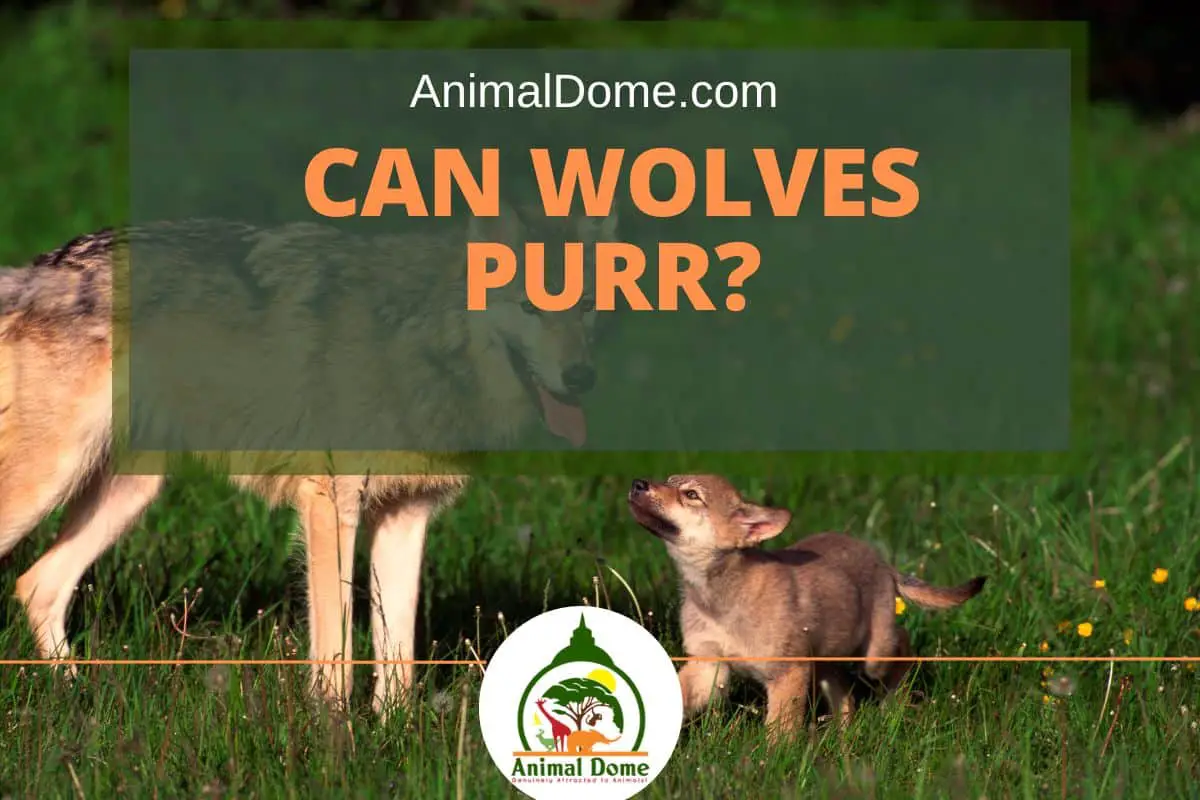Wolves talk uniquely. Aside from their famous howls, they make a lot of other sounds that humans have never heard. But what about when cats purr? Can wolves make a purring sound?
The answer is straightforward: Wolves don’t purr. For example, they don’t purr like cats do when they’re happy. Still, wolves make a lot of other sounds to talk to each other or show how they feel.
But there’s much more to it than that. In this article, we’ll discuss wolves’ sounds and their meaning. Make sure to read the rest of this article because some of the information will blow your mind.
What Sounds Do Wolves Make?
Let’s be honest: when we think about the sounds wolves make to communicate, we all get chills all over our bodies. They are different in many ways, especially in their sounds and how much they talk.
Some of the most common sounds that wolves make with their voices are:
Howls
The most common sound wolves make with their voices is howling. Usually, they use it to talk to other wolves far away. Howling also has different meanings, such as:
- Gathering to go hunting
- By letting other pack members know where they are
- Warn nearby rivals of their location.
Barks
Even though it may seem strange, wolves and dogs bark in very different ways. First, wolves don’t bark as long or as loudly as dogs do.
They only bark to send an alarm signal that something might be dangerous. For example, a mother dog might bark to call for help if she thinks her puppies are in danger. Or, they bark to let people know they are there and to protect their territory.
Growls
Wolves howl to warn that they are about to attack. This usually happens when wolves have to fight over food and growl at each other or other animals to defend their food.
Whines
When a wolf whines, it is usually being friendly and having fun. It can mean anything related to “I want” or “I need.” But whining could also be a sign of anxiety at times.
Why Do Wolves Howl At Night?
It is not true that wolves howl at the moon. Wolves are animals that come out at night, which is why they howl at night. Or, to put it another way, they are very active at night. This is why we often hear wolf howls in the night.
Every wolf has its own howl. By howling together, they make more complex sounds that give the impression of something different. It makes you think that there are more wolves than there really are.
Why Can’t Wolves Purr?
Wolves are in the dog family, so they can’t purr. This means that wolves don’t make sounds like a cat purring to show how happy they are. Still, when they play or cuddle, wolf pups chirp and whine.
Few animals make sounds like a cat’s purr besides cats. This includes badgers, bears, hyenas, rabbits, guinea pigs, squirrels, and foxes.
How Do Wolves Communicate With Each Other?
Wolves communicate unusually. It’s extremely complicated, and we could write an entire book about it. Nonetheless, we will do our best to explain it in simple terms.
Wolves would struggle to maintain social stability among pack members if they were unable to communicate. And vocal sounds are only one way they communicate. They also employ: Touches, scents, and body expressions.
Wolves in packs use various body postures to communicate their status. Their posture conveys a lot about their position in the pack. For example, if you see a pack of wolves, the one with the highest tail in the air is the alpha. On the other hand, those at the bottom of the rankings would have their tail almost between their legs.
Each wolf understands its place in the pack hierarchy. This is why rivalries and fights between wolves in their pack are uncommon.
A wolf’s ears stand straight up, and his teeth are shown when he is enraged. They are expressing their rage to other wolves in this way. On the other hand, a wolf that senses dread would flatten his ears behind the head.
Another important part of communication is the sense of scent. Wolves have a sense of smell that is more than 100 times better than that of humans.
Every wolf has a distinctive scent that sets it apart from other wolves. It resembles human fingerprints pretty closely.
Wolves use urine to mark their territories using scent marking. The urine of other members of the same pack can be recognized.
The flip side is that wolves outside the group would be aware if other wolves occupy a space. Wolves mark their territories and draw lines between different packs in this manner.
How Do Wolves Show Affection?
Wolves are incredibly loving creatures. They give their lives to defend the family member as a sign of love. Or, when they catch the prey, they first give the food to those who need it.
Other ways that wolves express their affection include:
- Social grooming
- Licking
- Nibbling
- Tactility
Do Wolves Cuddle?
Yes, wolves do cuddle. Wolves are in the same family as dogs, so they act a lot like dogs.
In fact, 98% of their DNA is the same between these two species. And cuddling is something that both wolves and dogs do.
As was already said, wolves are very social and have really strong bonds with other members of their pack. Wolves not only cuddled and played together, but they also slept together in groups.
Final Verdict
As we’ve seen in this article, the sounds wolves make with their voices can mean different things. They use them to talk to each other or show how they feel. The most common are howls, growls, whines, and barks. But wolves don’t purr like some other kinds of animals do.





